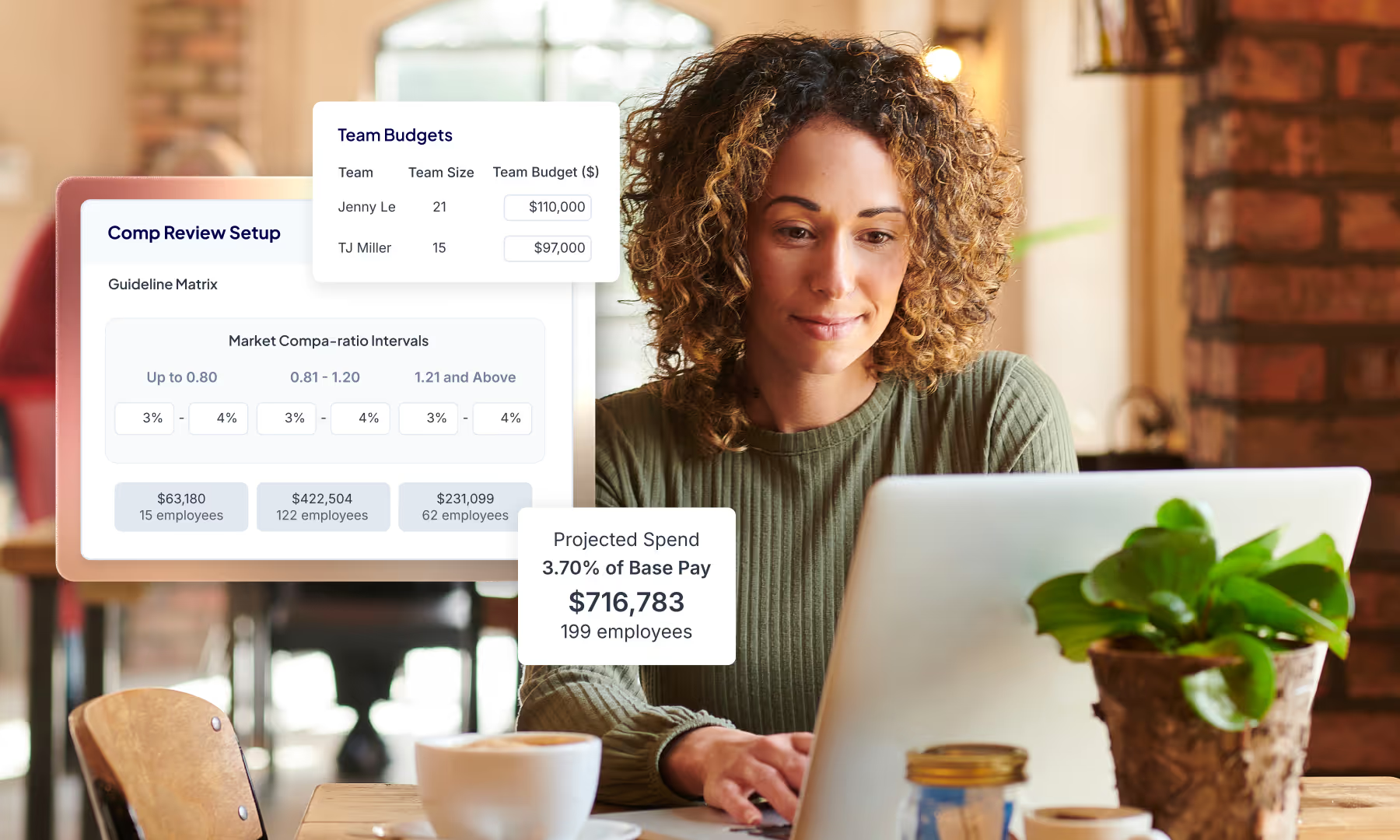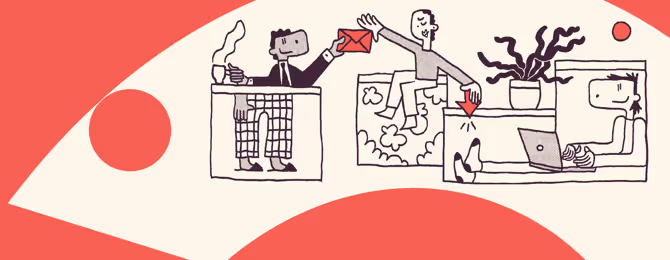Optimize your workforce with human resource planning
.png)
LEAD WITH CONFIDENCE
Streamline processes with our HR templates

Business moves fast. Your workforce has to move even faster. But a disconnect between your team’s current capabilities and what’s required for future success can really throw a wrench in things. That’s where human resource planning comes in: It focuses on analyzing your current talent and anticipating future needs to bridge that gap.
In this guide, we’ll break down the HR planning process, explain why it’s important, and show you how to implement it within your organization.
What is HRP?
Human resource planning (HRP), also known as workforce planning, is the process by which you make sure your company has the strongest workforce by predicting future talent needs and reviewing team skills. It also includes creating HR strategies to close any skills gaps.
HRP helps HR by matching personnel with strategic priorities. The goal? Putting the right talent in the right role at the right time. That strategic clarity not only supports long-term business goals but also creates clearer growth paths for employees.
5 benefits of HRP
Here are five ways human resource planning can help your business and your people.
1. Connect HR strategy to the bigger picture
HRP connects HR strategies to the company’s overall goals. It links resource planning to organizational targets so that your approach contributes to long-term success.
With this alignment, you can analyze your team’s needs and make data-backed, forward-thinking decisions.
2. Make every role count
HRP helps you assess your team’s current capabilities and create training and development plans to close skills gaps. Planning early means you can avoid shortages or surpluses in staffing while empowering your workforce for what’s next.
3. Grow your people and your business
HRP supports succession planning by training employees to fill key positions. Enabling internal promotions gives your team room to grow and reduces unexpected turnover. It also shows your employees you value their long-term success by preparing for their potential future within your organization.
4. Keep operations steady
Unexpected exits, market shifts, and demand forecasting errors can disrupt your company’s progress. A clear HRP model gives HR teams visibility into potential risks so they can prepare backup plans. Providing a roadmap forward keeps everything flowing smoothly, even when change happens.
5. Protect employees and the company
Good planning also keeps your company compliant. HRP helps you develop recruitment, training, and performance management practices that meet local labor laws and promote equity.
Workforce management versus workforce planning
We mentioned that HRP is sometimes referred to as workforce planning. So, if you find it hard to tell the difference between workforce planning and workforce management, you’re not alone.
These two strategies may sound similar, but they serve very different purposes:
- Workforce management is all about optimizing the day-to-day—operations-related tasks like scheduling, attendance, and time tracking.
- HRP/workforce planning looks to the future, forecasting talent needs, aligning skills with goals, and using tools like performance management to guide development and succession planning.
5 types of human resource planning
When it comes to the planning process in human resource management, there’s no one-size-fits-all approach. After all, different goals require different strategies.
Whether you’re scaling, restructuring, or just trying to stay a step ahead, these five types of HRP are essential.
Strategic HR planning
This kind of HRP looks beyond the next quarter by aligning your HR strategies with the company’s future direction. This includes the talent, skills, and leadership you need to meet your organization’s strategic goals.
Many teams are expanding this approach using artificial intelligence. Tools like Workleap AI help you analyze employee satisfaction and identify skills gaps. It’s like having a personal assistant that turns data into direction.
Operational HR planning
When you combine resource planning and execution, you get operational HR planning. This style focuses on the daily operations of a company like staffing, scheduling, and addressing immediate issues.
Talent management and workforce planning
This one’s all about the numbers and the people behind them. Workforce planning analyzes supply and demand to predict your organization's future staffing needs. When done well, you’ll have the right talent exactly when and where you need them.
Succession and leadership planning
Strong succession planning keeps leadership gaps from slowing you down. It identifies high-potential employees and builds their skills for future roles.
Contingency and risk planning
When uncertainty hits, contingency and risk planning can save the day. It focuses on identifying and mitigating potential risks like market shifts, sudden turnover, and economic issues.
Common HRP challenges
Even the best HR strategies sometimes hit roadblocks. From unpredictable markets to shifting priorities, staying ahead of change takes work.
Here are the biggest challenges HR leaders face when implementing HRP:
- Forecasting needs is tricky: Getting forecasting right is one of HR’s toughest jobs. Economic changes, emerging technology like AI, and other shifts can throw the best plans off track.
- Balancing flexibility and stability: Modern human resource management means being ready for anything. It can be tough to have an agile approach when it comes to remote work, freelance talent, and skills requirements.
- Connecting HR strategies to business goals: If your HRP doesn’t shift with your leaders and evolving priorities, you’ll end up with hiring plans that don’t match your business needs.
- Adapting to what’s happening outside the office: HR leaders have to juggle global hiring trends, new compliance standards, and changing workforce demographics. All of this happens while keeping a pulse on company culture and productivity.
Strategies for addressing gaps in human resource planning
Don’t wait for problems to surface. Use your HRIS, engagement tools, and performance insights to spot hiring trends, retention risks, and emerging skills gaps early. The right data makes workforce planning sharper, faster, and far less reactive.
Turn data into decision-making
Proactive HR planning means staying closely aligned with business shifts and goals. Use tools like Workleap Performance to track ongoing progress and uncover patterns before they become pain points. When you know what’s coming, you can staff and scale with confidence.
Plan ahead instead of playing catch-up
Proactive HR planning means staying closely aligned with business shifts, performance improvement data, and strategic goals. With tools like Workleap Performance, you can monitor progress continuously, spot underperformance early, and make informed decisions about resourcing and development—before issues disrupt momentum.
Aim for improvement
HR planning isn’t one-and-done. Keep a pulse on what’s working (and what’s not) by building feedback loops into your strategy. Whether it’s Workleap Officevibe surveys or post-review retros, frequent check-ins help your plans evolve in real time.
Invest in your people, not just your pipeline
It’s not enough to hire well; you have to grow what you’ve got. Continuous learning and L&D tools help employees upskill and stay ready for what’s next. Plus, development fuels retention and engagement, which keeps your HR plan stable.
Build engagement that powers performance
Low morale leads to turnover, and turnover breaks even the best-laid plans. Workleap Officevibe keeps you ahead of the curve by flagging issues before they snowball. When employees feel seen and supported, they stay. And, more importantly, they perform at their best.
Use a talent marketplace
Not every skills gap needs an external hire. Internal talent marketplaces give current employees visibility into new roles and projects, so you can redeploy people based on interests and strengths. It’s a smart way to boost mobility, engagement, and retention in one move.
What tools are used in human resource planning?
There’s no magic wand for HRP, but there are tools to help you out. Here are the four that matter most.
1. Smart forecasting tools
Workforce planning starts with a sharp forecast. Tools like internal talent analytics and growth modeling help you predict future hiring needs based on turnover trends, growth targets, and evolving skill sets. With Workleap Performance, you can track development and performance data over time, giving you a forward-facing view of who's ready for more and where to build next.
2. Live analytics dashboards
If you're still toggling between spreadsheets, it's time to upgrade. Workleap Officevibe's real-time dashboards consolidate engagement scores, turnover signals, team dynamics, and more, all in one place.
3. Performance management platforms
Employee performance management platforms like Workleap are one of the best ways to manage workplace dynamics. These tools align your team’s individual priorities with your overarching strategic goals. They also help spot skills gaps and highlight who’s ready to level up.
4. Compensation and benefits systems
Pay equity is more than a nice-to-have element—it’s a retention driver. Workleap Compensation helps you create fair, competitive, and transparent compensation packages that reflect real market data. With centralized workflows and clear benchmarks, you’ll build trust and keep top talent on board.
Maximize your human resource planning with Workleap
HRP is your secret weapon for staying ahead of change. When your planning is powered by real-time data, aligned goals, and flexible tools, your workforce becomes agile and future-ready.
Workleap brings it all together. Use Workleap Officevibe to surface insights through pulse surveys and engagement data. Track goals, growth, and development with Workleap Performance. And build fair, competitive packages with Workleap Compensation. One platform. Zero guesswork.
Get started for free to see how Workleap simplifies your HR planning, from insight to action.
Eager to simplify the way you work and boost your employee experience?


%20(1).png)


.png)
.png)







